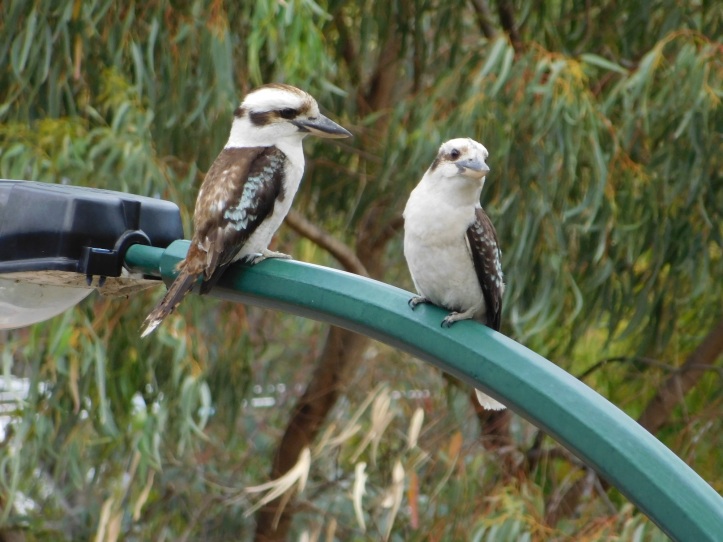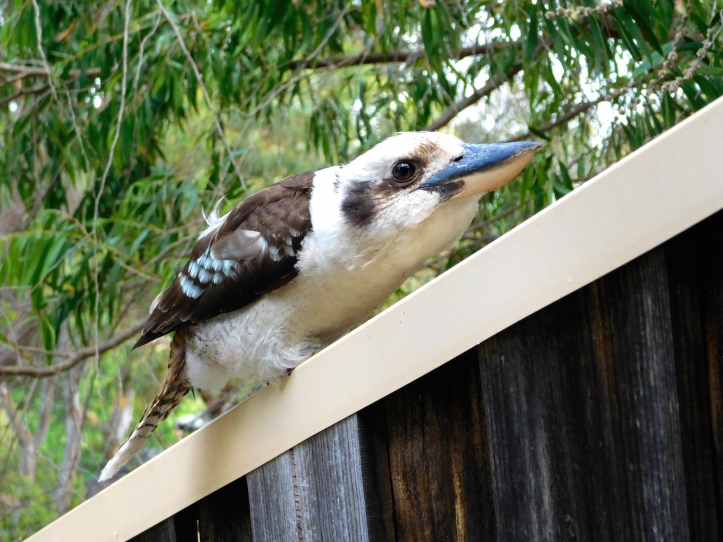With a call that sounds like laughter and a diet that includes snakes – there’s already a lot of fascinating facts you might be aware of about the kookaburra. But did you know these birds also form complex families that include things like chores, slacking off from chores, stepparents and divorce!
In the Family Way
A typical laughing kookaburra family (Dacelo novaeguineae) actually includes a breeding pair (Mum and Dad) plus up to eight of their offspring who’ve stayed on to help raise their future brothers and sisters.
These helpers are supposed to fulfill chores… like finding food for the young and defending their territory. But guess what? Sons and daughters aren’t equally handy at helping out…

Sons vs. Daughters
In fact while sons work tirelessly, the daughters are actually so bad at helping they decrease the new chicks’ chance at survival! This is why kookaburra couples with only daughters helping, have the lowest success rate when it comes to raising chicks – lower even than those kookaburra couples who have no helpers at all.
In addition to slacking off, daughters fly the coop sooner than their brothers too. At age one, when both sexes are sexually mature, 79% of sons are still helping whilst just 57% of daughters are. Some daughters even leave the nest before they’ve helped at all!
What’s a little odd though, is that kookaburra couples with no helpers are more likely to have daughters – despite them being the least helpful of the sexes.
So… why? Why not have sons instead who’ll be more helpful? Well, scientists believe it’s because unassisted kookaburra couples usually exist in smaller territories where there’s not as much food. Having daughters is therefore better because they’ll leave the nest sooner, reducing competition for food in their already small space.

Stepparents & Divorce
What’s also odd, is that despite a strictly exclusive (or monogamous) relationship between the breeding pair of kookaburras, studies have found that an unhappy female will ‘initiate a divorce’. Despite the male doing by far the bulk of the parental care, if the female is unsatisfied with his efforts she can move on – leaving Dad alone with their offspring.
On a slightly more positive note, any offspring helping don’t follow Mum’s lead. Instead, they stay with their father continuing to help with the chores. Should he find a new partner, a would-be stepmother to the siblings, they stay on to help raise their future step-siblings too.

References
Legge, S. (2000). The effect of helpers on reproductive success in the laughing kookaburra. Journal of Animal Ecology, 69(4), 714-724.
Legge, S., & Cockburn, A. (2000). Social and mating system of cooperatively breeding laughing kookaburras (Dacelo novaeguineae). Behavioral Ecology and Sociobiology, 47(4), 220-229.
Legge, S., Heinsohn, R., Double, M. C., Griffiths, R., & Cockburn, A. (2001). Complex sex allocation in the laughing kookaburra. Behavioral Ecology, 12(5), 524-533.